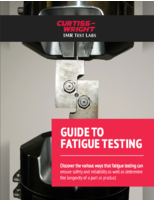NTSB Chairman describes future of automotive safety.
Share:
Press Release Summary:
Speaking at 2008 Washington D.C. Auto Show, NTSB Chairman Mark Rosenker highlighted categories of crash avoidance technology that is on NTSB's list of Most Wanted Safety Improvements. Rear-end crash warning systems, adaptive cruise control, and automatic braking systems help prevent or mitigate rear end collisions. With Infrastructure Telematics, road-based systems provide drivers with information such as location-specific weather conditions, route-specific road closures, and work zone status.
Original Press Release:
NTSB Chairman Describes Future of Automotive Safety Technology
Washington, DC - National Transportation Safety Board Chairman Mark V. Rosenker today said that the auto industry has recognized the limitations of improving the crashworthiness of vehicles as a way to reduce highway fatalities and are now developing innovative technologies to help prevent the accidents themselves.
Speaking at the 2008 Washington, D.C. Auto Show, Rosenker noted that there are nearly 250 million vehicles registered in the United States; their operation results in 6 million police-reported crashes and more than 42,000 fatalities annually. "For several decades, the number of fatalities has been dropping, and more importantly, the fatality rate has also been dropping. These improvements can be attributed to the use of seatbelts and child restraint systems; the development of airbags, antilock brakes, crash-absorbing vehicle frames; and campaigns to reduce drunk driving."
However, the decreases in fatalities and injury rates have leveled off in recent years. "So, while we have accomplished much in the past decade to improve the crashworthiness of automobiles, we have reached some practical limits in combating the physical forces involved in crashes. In recognition, the auto industry is moving beyond crash mitigation and into a new era where technology will help us prevent accidents."
Recently, the NTSB added the issue of preventing collisions using enhanced vehicle safety technology to its list of Most Wanted Safety Improvements.
Chairman Rosenker highlighted categories of crash avoidance technology.
-- Vehicle-based Crash Avoidance Systems: Rear-end crash warning systems, adaptive cruise control and automatic braking systems are designed to prevent or at least mitigate the most common type of crash - rear end collisions. Lane departure avoidance systems and curve-speed warning systems are being developed to target the most fatal type of events - run-off-the-road accidents.
-- Infrastructure Telematics: A DOT initiative that includes road-based systems to provide drivers with a sophisticated means for obtaining information about their vehicles and the road - information like location-specific weather conditions, route- specific road closures and work zone status. Adverse weather is associated with 800,000 injuries and more than 7,000 fatalities a year.
Rosenker noted that the National Highway Traffic Safety Administration is revising its New Car Assessment Program, which ranks automobiles on their crashworthiness using a 5-star rating system, because 95 percent of 2006 model year vehicles received 4 or 5 stars. The new system will reflect more modern crash avoidance technology.
Rosenker said the success of these technologies will depend on the public's readiness to accept them. "I am confident that highway automation will greatly improve safety, but I am not naive about what it will take to see these benefits. In the end, it is the public, and their ability and willingness to make use of these systems, that will determine how effective they will be - and how soon."
The complete text of Chairman Rosenker's speech may be obtained here.




